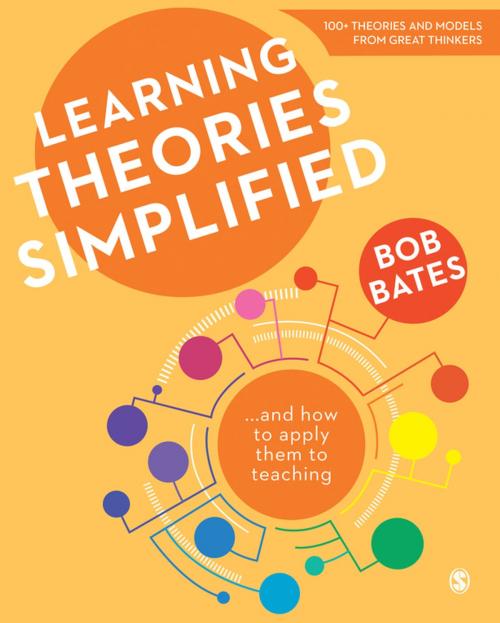Learning Theories Simplified
...and how to apply them to teaching
Nonfiction, Reference & Language, Education & Teaching, Teaching, Teaching Methods| Author: | Dr. Bob Bates | ISBN: | 9781473962194 |
| Publisher: | SAGE Publications | Publication: | October 8, 2015 |
| Imprint: | SAGE Publications Ltd | Language: | English |
| Author: | Dr. Bob Bates |
| ISBN: | 9781473962194 |
| Publisher: | SAGE Publications |
| Publication: | October 8, 2015 |
| Imprint: | SAGE Publications Ltd |
| Language: | English |
Are you struggling to get your head around John Dewey’s educational pragmatism? What exactly is Jean Piaget saying about cognitive development? Maybe you’re running out of time and patience making sense of Carol Dweck’s mindsets? Have you reached breaking point reading Daniel T. Willingham on educational neuroscience?
Written for busy teachers, trainers, managers and students, this dip-in dip-out guide makes theories of learning accessible and practical. It explores over 100 classic and contemporary learning theorists in an easy-to-use, bite-sized format with clear relevant illustrations on how each theory will benefit your teaching and learning.
Each model or theory is explained in less than 350 words, many with accompanying diagrams, and the ‘how to use it’ sections, in less than 500 words. Every entry includes:
- Do it steps in order to apply the theory or model
- Reflection points & challenges to develop your understanding of how to apply it
- Analogies & metaphors from which understanding and meaning can be drawn
- Tips for the classroom
- Further reading if you want to explore a theory in greater depth.
More titles by Bob Bates:
Educational Leadership Simplified
A Quick Guide to Special Needs and Disabilities
Are you struggling to get your head around John Dewey’s educational pragmatism? What exactly is Jean Piaget saying about cognitive development? Maybe you’re running out of time and patience making sense of Carol Dweck’s mindsets? Have you reached breaking point reading Daniel T. Willingham on educational neuroscience?
Written for busy teachers, trainers, managers and students, this dip-in dip-out guide makes theories of learning accessible and practical. It explores over 100 classic and contemporary learning theorists in an easy-to-use, bite-sized format with clear relevant illustrations on how each theory will benefit your teaching and learning.
Each model or theory is explained in less than 350 words, many with accompanying diagrams, and the ‘how to use it’ sections, in less than 500 words. Every entry includes:
- Do it steps in order to apply the theory or model
- Reflection points & challenges to develop your understanding of how to apply it
- Analogies & metaphors from which understanding and meaning can be drawn
- Tips for the classroom
- Further reading if you want to explore a theory in greater depth.
More titles by Bob Bates:
Educational Leadership Simplified
A Quick Guide to Special Needs and Disabilities















